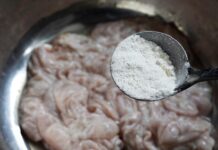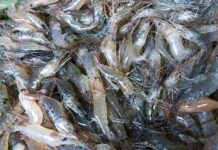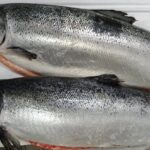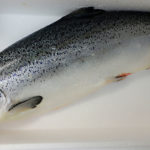How to Choose Fresh and Delicious Salmon the Right Way
For whole, fresh salmon
First, you need to observe the fish’s eyes. Clear eyes that are not cloudy or yellowish indicate freshness. Additionally, the eyes should be slightly bulging; sunken eyes are a sign of inferior quality.
The body of the fish should be bright and shiny. Its skin should be tight against the body, with no signs of bruising, damage, or scratches.
For the gills, a quick visual inspection will suffice. Fresh salmon will have bright red gills without any tears. Avoid buying fish with gills that have turned dark red or pale. Also, the gills should be free of any clotted, bruised blood.

Springiness of the Flesh
Fresh salmon should have a certain degree of springiness to its flesh. To test this, you can use one of the following methods:
– Gently press your finger into the fish’s body to check for springiness. Then slowly release your finger; if there is no indentation left by your finger, the fish is fresh.
– Lift the fish’s tail and give it a firm shake. If the flesh along the backbone feels firm and not loose, it passes the test. Alternatively, you can bend the body of the fish; when released, it should not show any wrinkles.
Freshness through Taste and Smell
Fresh salmon has a rich, distinctive flavor and aroma when eaten raw. If the salmon is not fresh, it will taste bland and may have a foul odor, indicating a decline in quality.
A fresh slice of salmon should not be mushy, and you should feel a certain firmness to the flesh.
For filleted salmon
Fresh salmon fillets should be bright pink or orange in color. If the flesh has turned darker, it means the fish is spoilt or about to enter the decomposition stage.
Additionally, high-quality flesh will be extremely springy. When pressed, it should leave an indentation but quickly bounce back to its original state.
Examine the surface of the fillet; it should be dry and free of any strange liquid or discharge. The fat stripes on the fish’s body should be evenly colored and bright, with no signs of discoloration or brown spots.
Moreover, fresh fillets will have a distinctive aroma and should not smell strange or rancid.
According to Khoevadep
The Secret to Cooking Salmon Like a Pro: 4 Tips to Master This Delicate Dish
Master the art of cooking salmon like a pro with these 4 expert tips! First, select fresh, high-quality salmon – the key to a delicious dish. Enhance the flavor and texture by soaking the fish in a brine solution before cooking. Don’t discard the skin; it helps keep the fish moist and adds a crispy texture. Finally, consider using a hot pot to gently cook the salmon to perfection. With these simple tricks, you’ll be cooking salmon like a master chef!
Distinguishing Between Fresh and Frozen Salmon
Introducing the delectable and nutrient-rich salmon, a favorite among food enthusiasts. There’s no denying that nothing beats the taste and nutritional value of fresh salmon. However, distinguishing between fresh and frozen salmon can be a challenge. Thus, we aim to provide our readers with a simple guide to identifying the difference between the two.

































